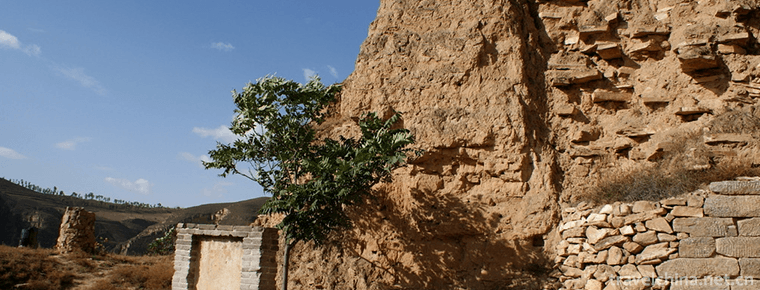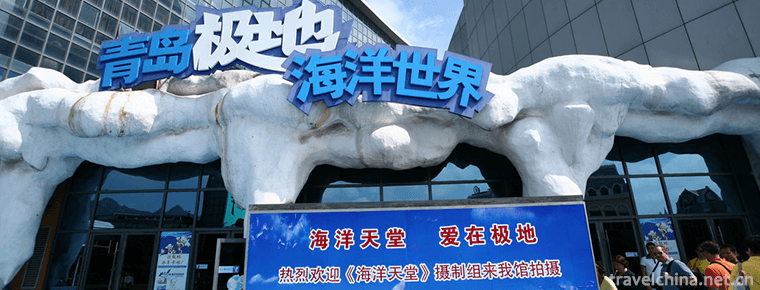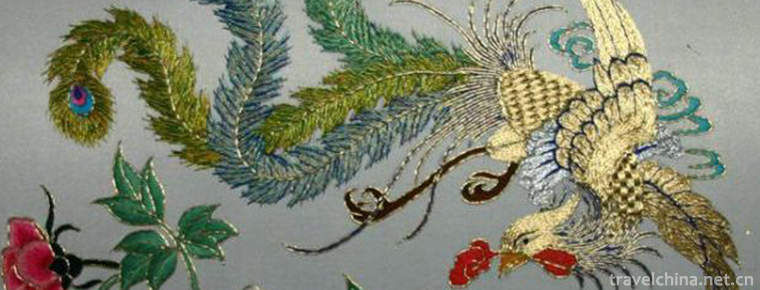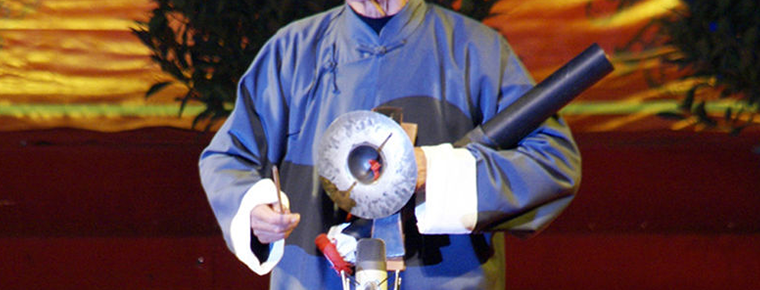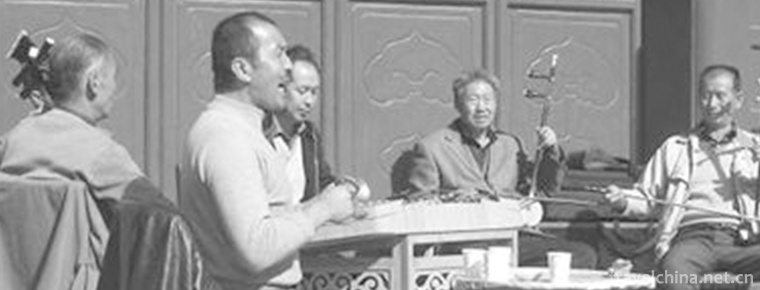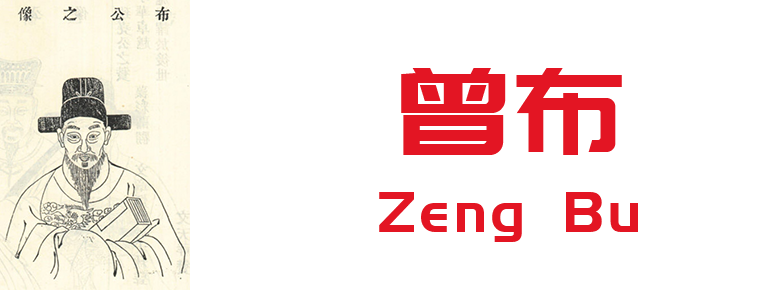Chengji Mountain Tourist Scenic Spot
Qiu Mountain, also known as Linglong Mountain, Xianshan Mountain on a journey to the West and Qiu Mountain Scenic Area, is located in Suiping County, Zhumadian City, Henan Province. It was developed in 2004 and is 40 km south of Zhumadian City. Its geographical coordinates are 33 degrees 07'57.52 in the north latitude and 113 degrees 43'22.31 in the East longitude, covering an area of 148 square kilometers .
The remaining veins in the eastern margin of Funiu Mountains in the Lyushan Mountains are connected by Nanshan, Beishan, Huaguoshan and Liufeng Mountains. Xiumei Lake, Biwa Lake, Baihua Lake and Tianmo Lake are distributed among them, with more than 300 scenic spots such as peaks, caves, shed and stones.
In 2004, Mt. Cheng was listed as National Geopark ; in 2015, Mt. Cheng was rated as National AAAAA Tourist Scenic Area
In May of the Republic of China (1944), the 13th Brigade of the Fifth Division of the New Fourth Army was established on the basis of Hongshiya in Lyushan; in November, the Henan Guerrilla Independent Corps headed by Huang Lin took the lead in crossing the Huaihe River to the area of Lyushan to open up an anti-Japanese base area and headquarters in Hongshiya, with commanders Huang Lin, deputy commander Yu Zhilong and political commissar He Zhenya. .
On April 20, 1958, the People's Satellite Commune of Mount Cheng was founded in Mount Cheng, the first people's commune established in China and the second people's commune in the world after the Paris Commune. In July of the same year, Chen Boda, former alternate member of the Political Bureau of the Central Committee and editor-in-chief of the Red Flag Magazine, made an investigation and study in Mount Cheng and drafted "The People of Mount Cheng Satellite". In August of the same year, the Chapter of the Chaoshan Satellite People's Commune was revised and approved by Mao Zedong and issued at the expanded meeting of Beidaihe Political Bureau. On September 1, the Chaoshan Satellite People's Commune was published in the full text of the 7th issue of Red Flag magazine. In October of the same year, the Chaoshan Satellite People's Commune was run by the Chaoshan Satellite People's Commune. On October 13 of the same year, Chairman Mao Zedong visited the satellite people's commune of Mount Chenglai.
In 1972, the Yonghong Reservoir was built in Chenglai Mountain (in 2004, Yonghong Reservoir was renamed Biwa Lake).
In 1989, Shanxi Travel Notes Brick Sculpture Museum was completed .
In 1997, the original Baogong Temple was expanded to Baogong Temple in Mt. Chenglai .
In 2000, Wu Gongting Pavilion and Bai Monkey Bridge were built in Chengshan.
In 2004, the tourism development and construction project of Mount Chenglai was launched.
In 2005, the Lanshan Geological Museum was officially completed and opened to tourists.
In 2009, the project of Hot Spring Town was launched in Mt. Chenglai .
Located in Suiping County, Zhumadian City, Henan Province, Mt. Lyushan is 40 kilometers south of Zhumadian City. Its geographical coordinates are 33 degrees 07'57.52'north latitude and 113 degrees 43'22.31' East longitude. It covers an area of 148 square kilometers and the main scenic area is 50 square kilometers.
topographic features
Located in the south-central part of Henan Province, Lyushan is a granite-shaped geomorphic area. It consists of Miwa Mountain, Nanshan Mountain, Beishan Mountain, Liufeishan Mountain, Huaguo Mountain and Tianmo Mountain, which are connected with each other. The main peak of Miwa Mountain is 300 meters high without a gap. After a long weathering and denudation, the granite of Lyushan belongs to medium-coarse grained normal (potassium). (2) Feldspar granite with flesh-red theme, porphyry and zonal structure, rich in medium-grained and coarse-grained potassium feldspar, also known as medium-coarse-grained potassium feldspar; Mount Lyashan was formed during the Yanshanian orogeny from the end of Triassic to Cretaceous, after the formation of orogenic rocks, the mountain body rose or fell relatively, forming a peak .
Climatic characteristics
Located in the transition zone between subtropical zone and warm temperate zone, Chenglai Mountain is a typical continental monsoon semi-humid climate with abundant sunshine, abundant rainfall, mild and humid, four distinct seasons, annual average temperature 15.1 C; the hottest in July, monthly average temperature 27.5 C; the coldest in January, monthly average temperature 1.4 C. The annual average precipitation is 927 mm and the annual average sunshine is 2126 hours.
natural resources
There are thousands of native plants growing on the mountainous body of Mt. Chenglai, covering more than 95% of the total. There are broad-leaved, needle-leaved, evergreen, deciduous irrigated trees and wild fruits, medicinal materials, wild vegetables and flowers, etc. In late autumn, red leaves are a natural phenological landscape in the frost season.
Main attractions
Overview
Range Hill is mainly composed of Nanshanmen, Nanshan, Beishan, Liufeng Mountain, Tianmo Lake and Biwa Lake. Stone, mountain and water are interdependent in the scenic area. Gorges, valleys and peaks are connected. Nanshan, Beishan and Liufeng Mountains are adjacent. Xiumi Lake, Biwa Lake and Tianmo Lake are scattered among them, including Nanshanmen, Dongshanmen and Beishanmen 。
Nanshan District
Nanshanmen District is located at the southern end of Mount Chenglai. The main scenic spots include the main monument, patch bridge, stone arch bridge, Nanshanmen, West Tour Cultural Square, Geological Museum, West Tour Brick Sculpture Museum, Waterwheel Style Street, etc. .
Main scenic spot
The main monument of the scenic spot is on the front, inscribed by Zhang Hai, chairman of the Chinese Calligraphy Association. On the east, it is the name of Mount Qigong, the former chairman of the Chinese Calligraphy Association. On the west, it is the main monument of the National Geological Park of Mount Qishan. On the back, it is inscribed by Song Fujin. On the left side, the passageway sets up the ancient image of China. Chess and chess are 2.
Patch bridge arch bridge
Patch bridges are paved with folk stone clinkers and grinding pans, and stone arch bridges are built with stone materials from Suiping County.
Nanshan gate
Nanshanmen is the main Mountain Gate Square of the Chenglai Mountain. It is divided into front square and back square, covering an area of 100,000 square meters. It mainly consists of main mountain gate passage, main mountain gate comprehensive service area, parking area, main stele area of the National Geopark, waterwheel group area and sightseeing water system area.
Xi You Culture Square
There are statues of four Tang monks and apprentices in Journey to the West, as well as literary and artistic performances such as the reception ceremony and the Eight Precepts colliding with heavenly marriage.
Geological Museum
The Geological Museum, with a building area of 1500 square meters, is divided into three parts: the general exhibition hall of geosciences, the multi-media exhibition hall of Geology and the brick carving art gallery of Journey to the West. It is an irregular ring on the whole. In the exhibition hall, visitors are introduced to the formation and evolution of the geology of Mt. Changlai by means of sound, light, electricity, pictures and cultural objects. Cheng.
The brick carving Hall of the journey to the West
The brick sculpture Hall of Journey to the West, which was created by Zhang Cunshi, the heir of the sixth generation of Hui carving, with more than 30 disciples, lasted more than three years. The brick sculpture is 100 meters in length and totally 20 editions. It uses the mud of the Yellow River as a blank. Through various sculpture techniques, such as high relief, shallow relief, hollow carving, sculpture and line carving, it carves more than 3600 demons, 1800 figures and 100 figures. Hui, 99 scenes, 81 difficult, 71 countries, a comprehensive and systematic description of the story of Journey to the West .
Waterwheel Street
Waterwheel Style Street, Waterwheel Group 6, 28 meters high, 20 meters in diameter, single weight 9.6 tons. The shape of the water truck is similar to that of the ancient wheel. The water lifting height is 26 meters. The spoke center is a thick axle, with about 50 wooden buckets inclined around the wheel and twice as many cross plates as wooden buckets.
Nanshan
Nanshan, located at the southern end of Mt. Chenglai, climbs up the stairs from Mt. Nanshan. The main scenic spots are Monkey Moon Watch, Xiumei Lake, Honeywax Peak, Wugongting Pavilion, Chenglai Daxian, Black Wind Tunnel, Baogong Temple, Taohua Cave, Animal Stone, Tongtian Devil Turtle, Sea Lion Stone, Frog Watching the Heaven, Erdaomen, Wild Rongyu, War and Peace, Wulong Palace, Journey to the West. Plastic Garden, Qiangkong Bai, Hundred Steps, Slideway, Fenghuangtai, Laojun Garden Peak, Qianlong Bed, Flying Stone, Shouxing Stone, Wugong Cave, Yixian Tian, Chinese Bonsai Garden, Stone Monkey, Mother and Son Stone, Suspension Bridge, etc. .
Double monkey watching the moon
Two monkeys look at the moon, the first scene of the three famous stones in Mount Chengji, and the two monkeys look at the moon on the back of monkeys, which means "the first stone monkeys and lover stones in the world" (the other two scenes are the first stone monkeys and lover stones in the world).
Xiu Mi Lake
Xiu Mi Lake
It is named for the honeywax mountain near the lake, which means beautiful scenery and pleasant Lake water.
Wu Gong Ting
Wu Gong Ting was built to commemorate the 500th anniversary of Wu Chengen's birth. Wu Gong was the honorific title of the people of Chengshan when Wu Chengen wrote Journey to the West in Chengshan.
Batu Caves
Black Wind Tunnel is a typical granite accumulation scaffolding cave landscape. The exit is the scene of catching the black wind monster in the TV drama Journey to the West.
Sculpture garden of journey to the West
The Sculpture Garden of Journey to the West is a theme sculpture garden based on the main stories and characters in Journey to the West. The main scenic spots include flower and fruit curtain cave, master and apprentice Sutra collection, Leiyin Temple, Baigu Cave, spider spirit, Saint-baby King, Yanluo Hall, Tongtian Devil Turtle, wolf spirit, fox monster and tree spirit rattan fairy.
Thin strip of sky
A line of sky, 10 meters high, 20 meters long and 30 centimeters wide, can only see a line from the inside, so the name "line of day".
Beishan
Beishan, located at the northern end of Mount Chan, has three main attractions: Penglai Cave, cliff stone carving, Baiyun Cave, Tianwangding, etc. .
Cliff inscriptions
There are two main cliff stone carvings: one depicts the "Four Images" of "like dogs, like sheep, like horses, like non-images"; the other depicts the "Buddha animals" of the Buddha's face; the other depicts the "Buddha animals" and the "Four Images" of the cliff carvings of different times, and is also one of the well-preserved ancient cultural relics of Mount Chengji.
King of heaven
Tianwangding, the main peak of Beishan, is more than 500 meters above sea level. The mountain road leading to Tianwangding is narrow. It needs to bend down and ride on rocks to pass through. The top of the mountain can overlook the eastern Great Plain .
Tian Mo Hu
Tianmo Lake, located in the western end of the Ronglai Mountains, is mainly scenic spots such as Buddha's finger, suspended needle stone, viewing platform, Bibotan, Yingxiejian, Grand Curtain Cliff, Guanyu Peak, Shoushan Stone Monkey, Echo Valley, Tianmo Peak, Tianmo Lake, Moon Bay, breadstone, Bai Monkey Bridge, Linglong Peak, etc. .
Hanging needle stone
Suspended needle stone, located on the West Wanghualing Mountains of Fenghuangtai, the main peak of Nanshan Mountain, is an independent stone pillar with a width of 28 metres and a height of 28 metres. It resembles an inverted steel needle.
Hundred monkey bridge
Bai Monkey Bridge, 107 meters long and 15.2 meters high, is a 16-hole 15-block dam-type landscape bridge. There are 130 stone monkeys in the guardrail, so it is called Bai Monkey Bridge.
Lake Biwa
Biwa Lake is located in the southern end of Shanxi Province. The main scenic spots are Biwa Lake, Biwa Stone, Yonghonglong Dragon, Mao's Wall, Hong'er, Emei Peak, Geological Science Garden, Baizhang Cliff, Fengshui Ridge, etc. .
Lake Biwa
Biwa Lake, also known as Yonghong Reservoir, is named for its resemblance to Biwa Lake and the existence of Biwa Stone beside the lake; Biwa Lake is sunny on its back and densely forested in steep valleys.
Hundred cliff
Baizhangya, the granite is affected by orogeny. Rocks rise or fall to form a rock steep wall landscape on the bare surface. It is named Baizhangya because of its towering appearance.
Development and construction
Infrastructure
In 2015, a number of self-driving parking spots such as the South Gate and the East Gate were added and widened.
brand building
Mount Chengshan is the site of Wu Chengen's famous work Journey to the West . It is also the location of the TV series Journey to the West and the sequel of Journey to the West .
Mount Cheng is the birthplace of the first people's commune in Chinese history.
On September 25, 2000, the Chenglai Mountain Satellite People's Commune was announced by the Henan Provincial People's Government as a key cultural relic protection unit in modern times .
In January 2004, Mt. Chenglai was listed in the National Geopark .
In 2004, Mt. Chenglai Scenic Area was awarded the first batch of civilized scenic spots at the provincial level.
In 2004, Mt. Chenglai was awarded the Top Ten Scenic Spots at the provincial level .
In 2005, Mount Chenglai was listed in the National Forest Park .
In 2006, Mt. Chenglai was listed as a national cultural relic protection unit .
In 2010, Mt. Chan was awarded the National Youth Civilization Number .
In November 2015, Mount Chengji successfully created the national AAAAA-level tourist attractions .
In 2017, Mt. Chenglai was awarded the outstanding unit in tourism work .
In 2017, China Mountain Marathon Series Zhumadian Qiaoshan Station was awarded the title of "Mountain Horse in the West Tour" by China Mountaineering Association.
Cultural Activity
Historical legends
At the end of the Western Han Dynasty, Wang Mang banished Liu Xiu from catching up with him, and Liu Xiu escaped with him. At the end of the Sui Dynasty, Dou Jiande, the leader of the peasant uprising, fought a decisive battle with Li Shimin, the king of Qin, and died in the battle of defeat in Mount Chan because of his outnumbered enemies. When Li Shimin sat on the emperor's seat, he loved the place where he laid the foundation for his victory. He often took Qin Qiong and Jingde to visit the mountains and rivers. In the early Tang Dynasty, Xuanzang eulogized Sutras and practiced in the area of Mount Chenglai. His great disciples Daoquan and his three disciples Daoyi were from Mount Chenglai.
Wu Chengen took a long journey to avoid disaster and traveled through Mt. Chan. He got inspiration from the Stone Monkey, Sleeping Tang Monk, Drunken Eight Precepts, White Dragon Horse, Dinghai Shenzhen Needle, Laojun Garden, Black Wind Tunnel, Gaolaozhuang, Liusha River and other landscapes. He created his masterpiece Journey to the West .
Hold activities?
On April 20, 1968, on the tenth anniversary of the establishment of the satellite people's commune in Mount Ronglai, a commemorative forest of "Long Live the People's Commune" was planted. A total of 1,000 evergreen trees belonging to Platycladus orientalis were planted, covering an area of 150 mu .
On April 15, 2017, the first leg of China Mountain Marathon Series was held in Mt. Chenglai.
Tourism information
Admission ticket
70 yuan per person;
Children under 1.4 meters are exempted from tickets, elderly people over 70 years old are exempted from tickets, soldiers, journalists and disabled people are exempted from tickets; those above 1.4 meters are purchased with student certificates, and those aged 60-70 with old age certificates and identity cards are purchased with preferential tickets .
Opening Hours
The opening time of Mount Chengqi is 7:30-17:30 (summer) and 8:00-17:00 (winter).
Traffic information
Public transport railway
From Beijing, Shanghai, Guangzhou, Zhengzhou, Xiamen, Xi'an, Taiyuan, Chongqing, Chengdu, Wuhan, Changsha, Shijiazhuang, Yichang, Huaihua, Yinchuan, Guiyang, Wuxi, Nanjing and Suzhou, trains pass through Zhumadian Railway Station and transfer to Suiping County Bus Station. The bus to the scenic spot of Mount Chenglai.
Self driving
Traffic routes from Zhengzhou, Anyang, Jiaozuo, Xuchang, Xinxiang and Kaifeng to Chenglai Mountain:
Beijing-Zhuhai Expressway - Suiping Export - Lyushan direction - about 20 km to Lyushan;
The route from Luohe to Mount Ronglai is as follows:
National Highway 107 - Suiping - the direction of Lyashan - about 20 kilometers to Lyashan;
The traffic routes from Luoyang, Jiyuan and Sanmenxia to Chenglai Mountain Scenic Spot are as follows:
(Lianhuo) Erguang Expressway - Nanluo Expressway - Luohe East to Beijing-Zhuhai Expressway - Suiping Exit - Laoshan Direction - about 20 km to Laoshan.
The route from Pingdingshan to Chenglaishan:
Pingdingshan - Wugang - 107 National Highway - Xiping - Suiping - Changlai Mountain;
Traffic routes from Xinyang to Chenglai Mountain Scenic Spot:
Beijing-Zhuhai Expressway - Suiping Export - Lyashan direction - about 20 km to Lyashan.












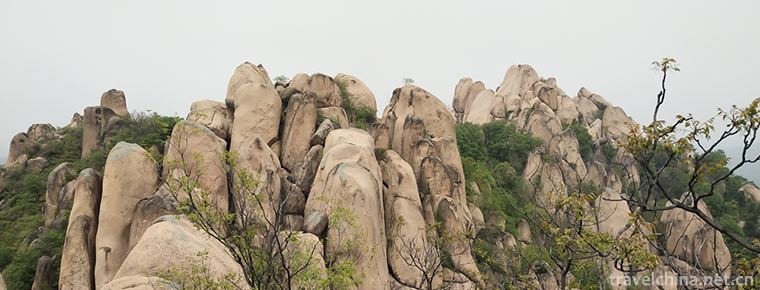
-
Du Shoutians former residence
Du Shitian's former residence is the old residence of Du Shitian, the emperor's teacher of the Qing Dynasty, as well as the old residence of many famous officials of the Du family. Located in Binzhou .
Views: 145 Time 2019-01-08 -
Hohhot Laoniuwan Tourist Area
Laoniu Bay is located at the entrance of Shanxi-Shaanxi Grand Canyon. This is the Great Wall, the only typical parallel section of the Yellow River. The widest part of the river is not more than 100 m.
Views: 159 Time 2019-01-16 -
Qingdao Polar Ocean World
Qingdao Polar Marine World is located at 60 Donghai East Road, Laoshan District, Qingdao City, Shandong Province. It is a large marine world complex integrating leisure.
Views: 227 Time 2019-02-07 -
Changsha window of the world
Changsha World Window is located on the Liuyang River in the northeastern suburb of Changsha City, Hunan Province. It is a cultural theme park jointly invested by Hunan Radio and Television Media Co.,.
Views: 180 Time 2019-03-17 -
Han Embroidery
Han embroidery, one of the traditional embroidery techniques with Chinese characteristics, is based on Chu embroidery, which combines the merits of various .
Views: 172 Time 2019-05-02 -
Hunan fishing drum
Fishing drum is also called tube and bamboo piano. Song Dynasty has emerged, is a popular traditional musical instrument in Hubei, Hunan, Shandong, Guangxi and other areas, often used in opera perform.
Views: 178 Time 2019-05-03 -
Qinghai Pingxian
Qinghai Pingxian, also known as Xining Fu Zi, is one of the new local folk songs in Qinghai Province. It is popular in Xining, Huangzhong, Datong and Mutual Aid Agricultural Areas. Qupai is known .
Views: 203 Time 2019-06-10 -
Zeng Bu
Zeng bu (November 3, 1036 - August 21, 1107), Zi Zi Xuan, Tai Chang, son of Yi Zeng, brother Zeng Gong of Zhong Shu Shu, the Prime Minister of the Northern Song Dynasty, and the important supporter of.
Views: 142 Time 2019-09-15 -
Time and reason of Ding Zhen popularity
Ding zhenhuo, a 20-year-old Tibetan Boy from Ganzi, Sichuan Province, was caught up in a short video of less than 10 seconds. The uploader of the video and the photographer "BOGO" who shot Ding Zhen also attracted netizens' attention. Talking about his first impression of Ding Zhen.
Views: 241 Time 2020-12-06 -
Geographical environment of Suining
Suining City is located in the middle of Sichuan Basin and the middle reaches of Fujiang River. It is between 105 ° 03 ′ 26 ″ - 106 ° 59 ′ 49 ″ E and 30 ° 10 ′ 50 ″ - 31 ° 10 ′ 50 ″ n..
Views: 163 Time 2020-12-16 -
Nanchong Education
By the end of 2019, there were 271 primary schools in Nanchong, with 57000 students enrolled and 356700 students in school. The enrollment rate of primary school-age children was 100%. There are 427 junior high schools with 62900 students and 185300 students in school..
Views: 337 Time 2020-12-17 -
Meishan primary industry
In 2019, the total sown area of crops is 318000 hectares, an increase of 1.1%. Among them, the planting area of grain crops was 196000 hectares, an increase of 0.6%; the planting area of oil crops was 58000 hectares, an increase of 1.8%; the planting area .
Views: 332 Time 2020-12-18

